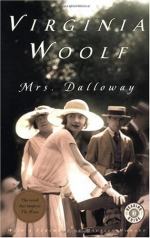|
This section contains 3,290 words (approx. 11 pages at 300 words per page) |

|
SOURCE: Narey, Wayne. “Virginia Woolf's ‘The Mark on the Wall’: An Einsteinian View of Art.” Studies in Short Fiction 29, no. 1 (winter 1992): 35-42.
In the following essay, Narey views “The Mark on the Wall” as an “artistic manifesto” of time and perspective influenced by the theories of Albert Einstein.
James Naremore's study of Virginia Woolf, The World without a Self, refers to her short story “The Mark on the Wall” as “a sketch in which the protagonist indulges in what appears to be a Freudian daydream” (58-59). The Freudian aspect of the story comes from the free-associative quality of the protagonist's thoughts, the only “action” in a tale in which the daydreamer never moves from her chair. While Naremore's observation is valid, another contemporary of Woolf makes his presence more strongly felt in the story. With “The Mark on the Wall” Woolf offers an artistic manifesto of an emerging...
|
This section contains 3,290 words (approx. 11 pages at 300 words per page) |

|


